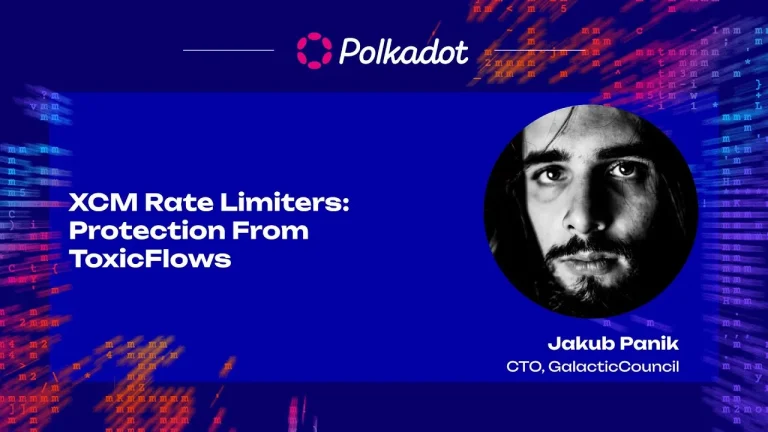The Polkadot ecosystem is a rapidly evolving, decentralized network that plays a pivotal role in the future of Web3 technology. As a Layer 0 blockchain, Polkadot provides security and interoperability for various blockchains (parachains) within its ecosystem. This sophisticated architecture brings immense potential, but it also introduces complexity, particularly in ensuring the stability and reliability of the network. By leveraging real-time data, stakeholders within the Polkadot ecosystem can better understand, manage, and stabilize the network, ensuring it remains robust and secure as it scales.
The Importance of Stability and Reliability for Polkadot
Stability and reliability are foundational to the success of any blockchain network, especially one as intricate as Polkadot. The network’s ability to maintain consistent performance, even as it undergoes upgrades and scales to support more parachains, directly impacts its usability and trustworthiness. Stability refers to the network’s capability to operate without disruptions, while reliability focuses on its ability to consistently deliver expected outcomes, such as successful transaction processing and block production.
Understanding Polkadot Data
Polkadot data is at the heart of understanding the network’s performance. This data includes information about transactions, voting patterns in OpenGov, block production times, and other critical metrics. Every block produced by the Polkadot network contains events and extrinsics, which are data types that record what happened within that block. Decoding this data requires specialized knowledge and tools, given the complexity and constant evolution of the network.
Challenges in Decoding Polkadot Data
Decoding and interpreting Polkadot data is not a straightforward task. The network’s ability to upgrade itself on-the-fly means that the logic used to decode blocks can quickly become outdated. Each upgrade can introduce new features or changes in the data structure, requiring developers to update their decoding logic accordingly. This complexity is compounded by the existence of multiple parachains, each with its unique data structure and upgrade schedule.
Various libraries, such as Polkadot.js API, PAPI, and Substrate Subxt, have been developed to assist developers in decoding and understanding Polkadot data. However, these tools still require custom logic and constant maintenance to remain effective. As the ecosystem grows, the challenge of maintaining accurate and up-to-date decoding tools becomes more significant.
The Need for Polkadot Network Real-Time Data
To stabilize Polkadot and ensure its reliability, it is essential to move beyond traditional analytical methods that provide insights after the fact. Instead, the ecosystem requires real-time data processing and monitoring capabilities. Real-time data allows stakeholders to detect issues as they occur, enabling faster responses and reducing the risk of prolonged disruptions.
For example, real-time data can help identify if a parachain is experiencing slower block production than usual or if an upgrade has negatively impacted network performance. By having immediate access to this information, developers and network operators can take corrective action before the issue escalates, maintaining the stability of the network.
Introducing DotSentry: A Real-Time Monitoring Solution
To address the need for real-time data in the Polkadot ecosystem, a solution known as DotSentry has been developed. DotSentry is an ecosystem-wide monitoring system that provides real-time data on the performance of Polkadot and its parachains. It is designed to be fast, resilient, low-cost, and open-source, making it accessible to all developers and network participants.
DotSentry operates by leveraging a publish-subscribe (pub/sub) logging architecture. In this model, parachains push data to a central broker, which then distributes the data to subscribers in real-time. This approach decouples the data capture process from the decoding process, allowing for greater flexibility and scalability.
The broker used in DotSentry is a lightweight alternative to traditional messaging systems like Kafka, enabling it to handle the high throughput required by the Polkadot ecosystem without the overhead of more complex solutions. The decoded data is made available to developers in a familiar JSON format, making it easy to integrate with existing tools and workflows.
The Architecture of DotSentry
DotSentry’s architecture is both simple and robust. It consists of two main components: a block listener and a block fetcher. The block listener is a lightweight Python script that connects to the WebSocket endpoint of a parachain’s RPC node. Whenever a new block is produced, the listener sends a signal to the broker. The block fetcher then retrieves the decoded block data from the Substrate sidecar and pushes it downstream to the broker.
This architecture allows DotSentry to scale horizontally, meaning it can easily accommodate additional parachains without significant changes to the underlying system. Developers can connect their services to DotSentry using any programming language, enabling a wide range of use cases, from real-time block explorers to automated alerting systems.
Use Cases for Real-Time Data in Polkadot
Real-time data has numerous applications within the Polkadot ecosystem, all of which contribute to the network’s stability and reliability. Some of the most impactful use cases include:
- Real-Time Block Monitoring:
- Developers can monitor block production times across all parachains in real-time, identifying any unusual delays or anomalies. This allows for immediate investigation and resolution of potential issues.
- Performance Impact Analysis:
- Following a network upgrade, real-time data can be used to assess the impact on the network’s performance. If the upgrade causes any unintended side effects, such as increased latency or transaction failures, these can be detected and addressed quickly.
- Anomaly Detection:
- Real-time data streams can be analyzed for patterns that deviate from the norm, such as unexpected spikes in transaction volume or unusual activity on a bridge. Early detection of such anomalies can prevent potential security incidents or network disruptions.
- Developer Tools Integration:
- By providing a real-time data feed, DotSentry enables developers to integrate live blockchain data into their tools and applications. This can include everything from real-time dashboards to automated testing frameworks that validate network stability under different conditions.
- Automated Alerts and Notifications:
- DotSentry can be configured to send alerts to network operators or developers when specific conditions are met, such as a drop in block production speed or a sudden increase in failed transactions. This proactive approach helps maintain network stability by ensuring that issues are addressed promptly.
The Future of Real-Time Data in Polkadot
As the Polkadot ecosystem continues to grow, the importance of real-time data will only increase. With more parachains coming online and the network supporting a wider range of use cases, maintaining stability and reliability will be paramount. DotSentry and similar real-time monitoring solutions will play a crucial role in achieving this goal.
Future enhancements to DotSentry could include expanding the data sources it monitors, such as node performance metrics and P2P network activity. Additionally, integrating long-term storage solutions with real-time data streams would allow for more comprehensive analyses, such as calculating moving averages or detecting trends over time.
Conclusion
Stability and reliability are critical to the success of the Polkadot ecosystem. By leveraging real-time data, stakeholders can gain immediate insights into the network’s performance, enabling faster responses to issues and reducing the risk of disruptions. Solutions like DotSentry provide the tools necessary to monitor and maintain the health of Polkadot and its parachains, ensuring that the network remains robust and secure as it continues to evolve.
In the fast-paced world of blockchain technology, real-time data is not just a luxury—it’s a necessity. As the Polkadot ecosystem grows, so too will the need for advanced monitoring and analysis tools that can keep pace with its rapid development. By embracing these technologies, the Polkadot community can ensure that its network remains a reliable foundation for the decentralized web.








